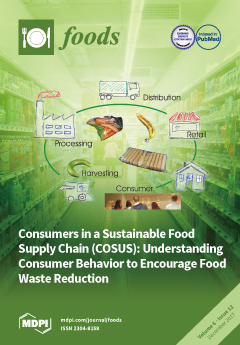Salmonella spp. is a major food-borne pathogen around the world. The ability of
Salmonella to produce biofilm is one of the main obstacles in reducing the prevalence of these bacteria in the food chain. Most of
Salmonella biofilm studies found in the literature
[...] Read more.
Salmonella spp. is a major food-borne pathogen around the world. The ability of
Salmonella to produce biofilm is one of the main obstacles in reducing the prevalence of these bacteria in the food chain. Most of
Salmonella biofilm studies found in the literature used laboratory growth media. However, in the food chain, food residues are the principal source of nutrients of
Salmonella. In this study, the biofilm formation, morphotype, and motility of 13
Salmonella strains belonging to three different subspecies and isolated from poultry houses was evaluated. To simulate food chain conditions, four different growth media (Tryptic Soy Broth at 1/20 dilution, milk at 1/20 dilution, tomato juice, and chicken meat juice), two different surfaces (stainless steel and polystyrene) and two temperatures (6 °C and 22 °C) were used to evaluate the biofilm formation. The morphotype, motility, and biofilm formation of
Salmonella was temperature-dependent. Biofilm formation was significantly higher with 1/20 Tryptic Soy Broth in all the surfaces and temperatures tested, in comparison with the other growth media. The laboratory growth medium 1/20 Tryptic Soy Broth enhanced biofilm formation in
Salmonella. This could explain the great differences in biofilm formation found between this growth medium and food residues. However,
Salmonella strains were able to produce biofilm on the presence of food residues in all the conditions tested. Therefore, the
Salmonella strain can use food residues to produce biofilm on common surfaces of the food chain. More studies combining more strains and food residues are necessary to fully understand the mechanism used by
Salmonella to produce biofilm on the presence of these sources of nutrients.
Full article






